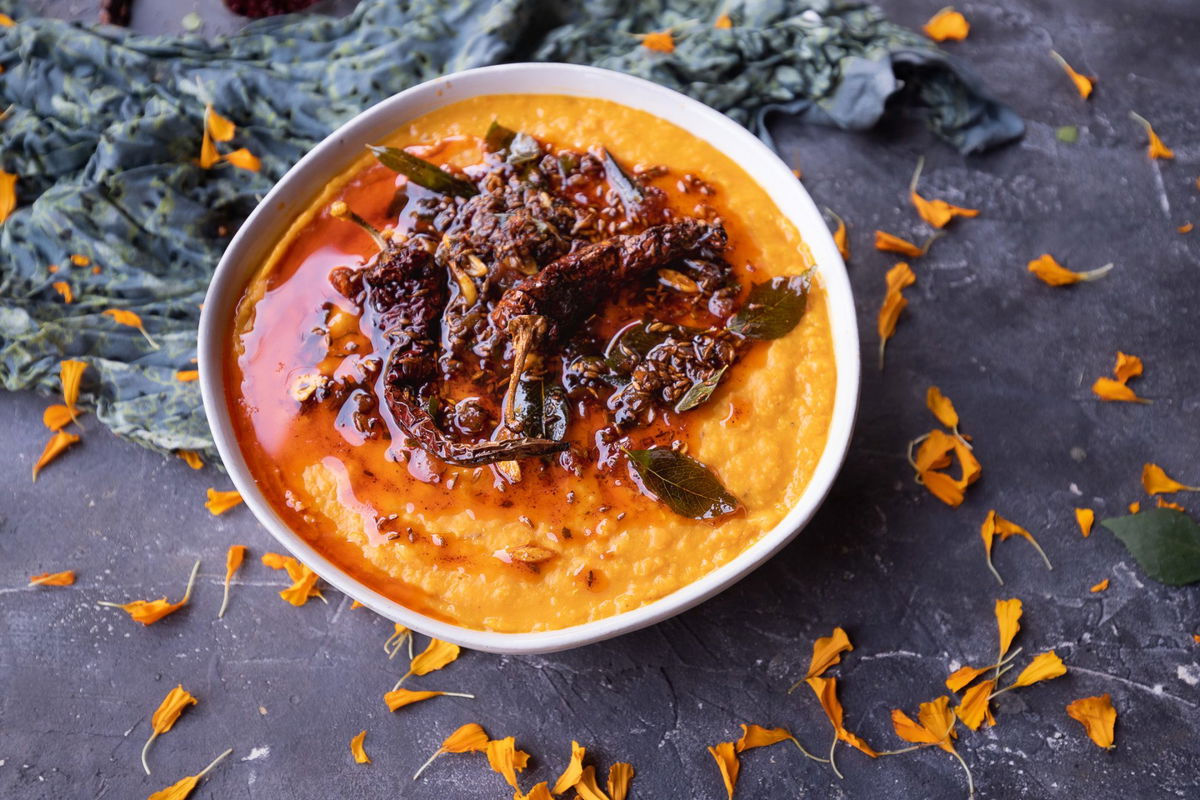Moriyo is a mildly spiced, savory porridge slightly tangy from the yogurt. It’s made out of moriyo, or barnyard millet. Typically this dish is referred to as “moriyo,” but it might more correctly be called “Moriyo Khichdi.” The moriyo millet is a delicate millet with a fresh, rather than earthy, taste.
If you are looking for a way to incorporate gluten-free grains and seeds into your diet, consider moriyo. Like other khichdi, It makes for a good light lunch or savory breakfast. It is a very traditional Gujarati dish eaten most often as a fasting food.
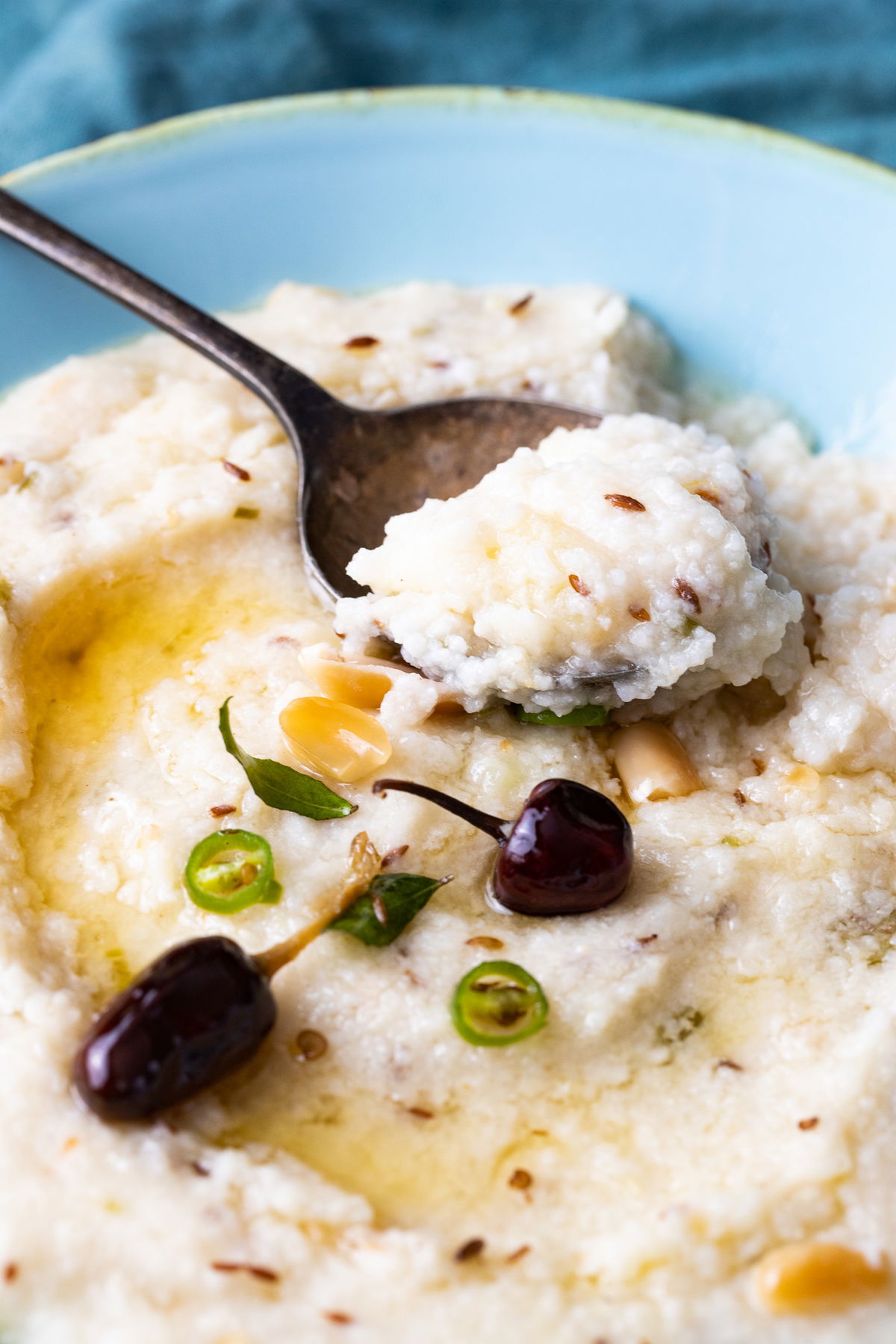
Other names for this dish: Gujarati style moriyo, moriyo, moriyo khichdi, samo khichdi, sama khichdi, sama chawal khichdi, barnyard millet porridge
About the Recipe
This is my mom’s recipe that I have adapted to use the Instant Pot. I tried a few different ways to get it to cook right. Along the way, I learned a few things:
- In one version, the potato didn’t cook all the way through, even though I had diced it very small. My mom grates it to avoid this problem or uses a boiled potato. My solution was to cook the potato in the Instant Pot until it was golden around the edges before cooking it under pressure. If you prefer, you can use a boiled potato or cook it in the microwave.
- I tested different quantities of water. This comes down to personal taste. I find 5-6 cups of water perfect for the porridge-like texture my family enjoys. If you want a more rice-like texture, reduce the water to 3 cups.
- When to put the ginger in: put it in after your potatoes and peanuts are sufficiently toasted. If you put the ginger in too soon, it will stick to the bottom and burn even with deglazing.
Ingredients
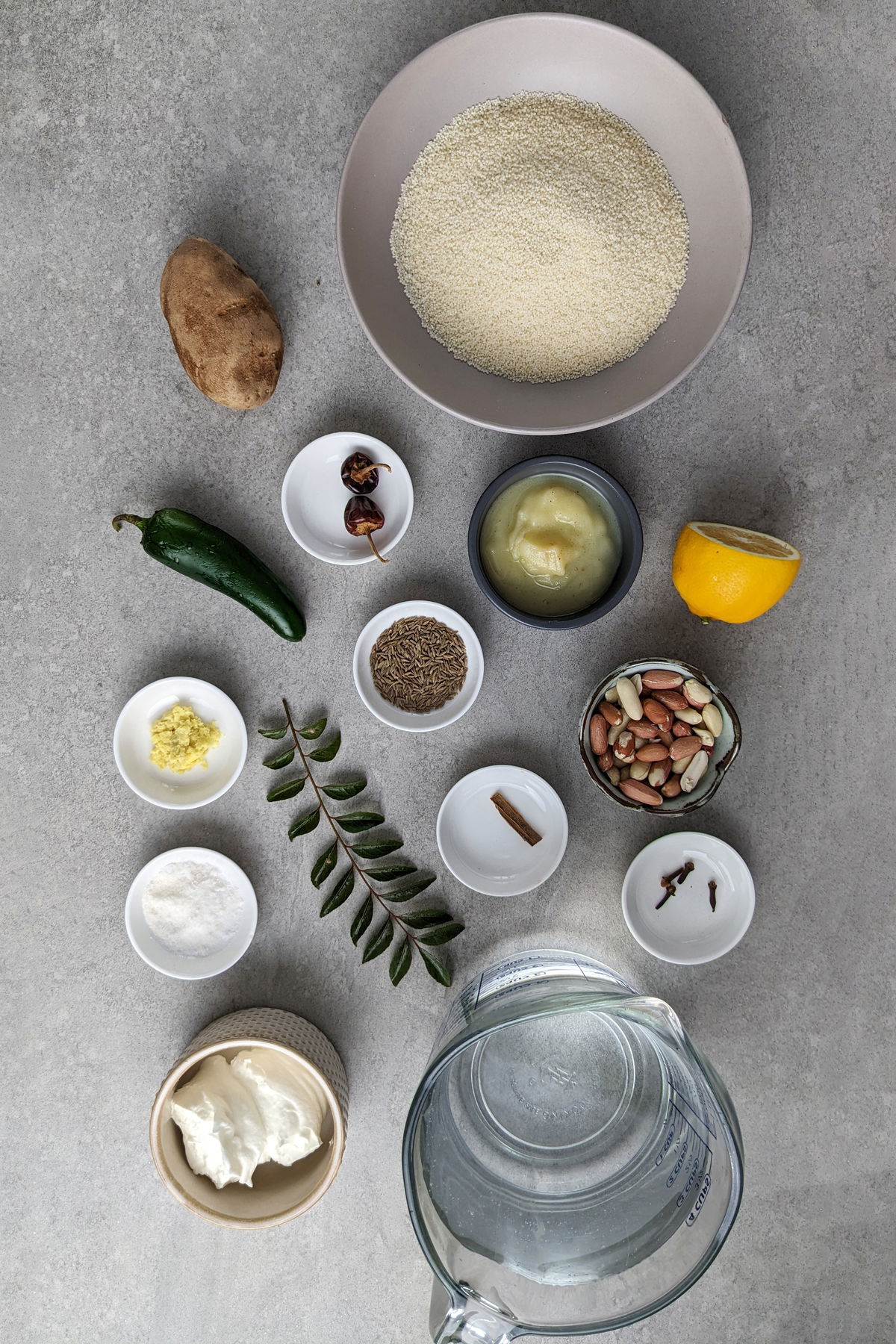
Moriyo – barnyard millet. You can find moriyo at an Indian store.
Potato – also a common fasting food, helps to give some variation in texture.
Ginger
Curry leaves
Yogurt – a common fasting food.
Lemon – a squeeze of lemon at the end adds a nice acidic finish. Typically, in India, you would use soured yogurt and would not need the lemon.
Serving Moriyo
Moriyo can be eaten alone. It is often served alongside yogurt and a plain potato shaak (no turmeric or red chili powder), suran (elephant yam), or amaranth kadhi (yogurt and amaranth).
These are all fasting foods. They are all white foods that are served plainly. It should also be eaten with “fasting salt,” sendha namuk. Sandha namuk is a sea salt in the form of rock salt.
Cooking Tips
- Ginger burning – Ensure that the ginger does not stick to the bottom of the pan. Make sure not to add it too soon; your potatoes should be golden before you add the ginger. And if the ginger starts to stick, add a little water to deglaze the pan before pressure cooking.
- Cooking the potato – the potato takes longer to cook than the moriyo. Make sure your potato is cooked to a golden color before adding the moriyo. Alternatively, you can use a potato that you have already cooked.
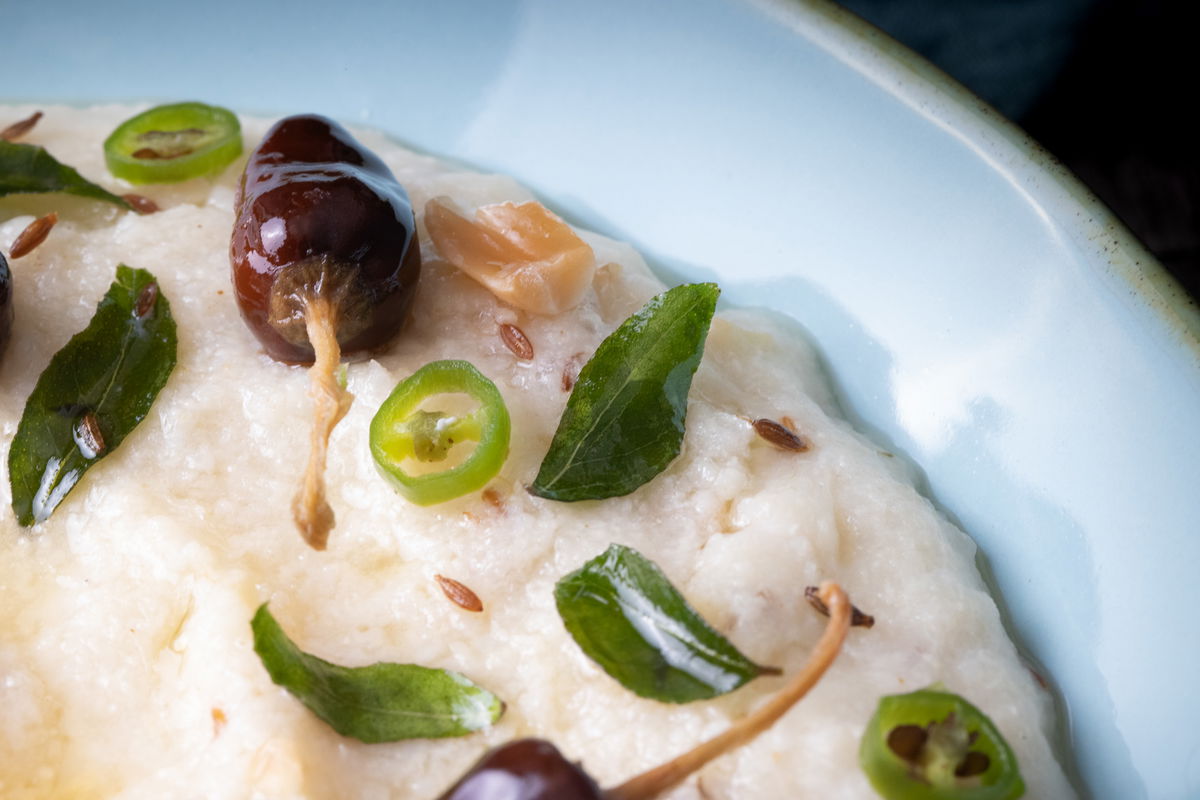
Stovetop Instructions
The Instant Pot may be a little more convenient for this recipe, but it is unnecessary. My mom makes it on the stovetop without using her pressure cooker. To cook it on the stovetop, cook everything the same.
When you add the millet, boil it for 15 minutes under medium heat, stirring every 5 minutes. You may need to add water as you cook if it starts to boil off. Cook with the lid on when you are not stirring.
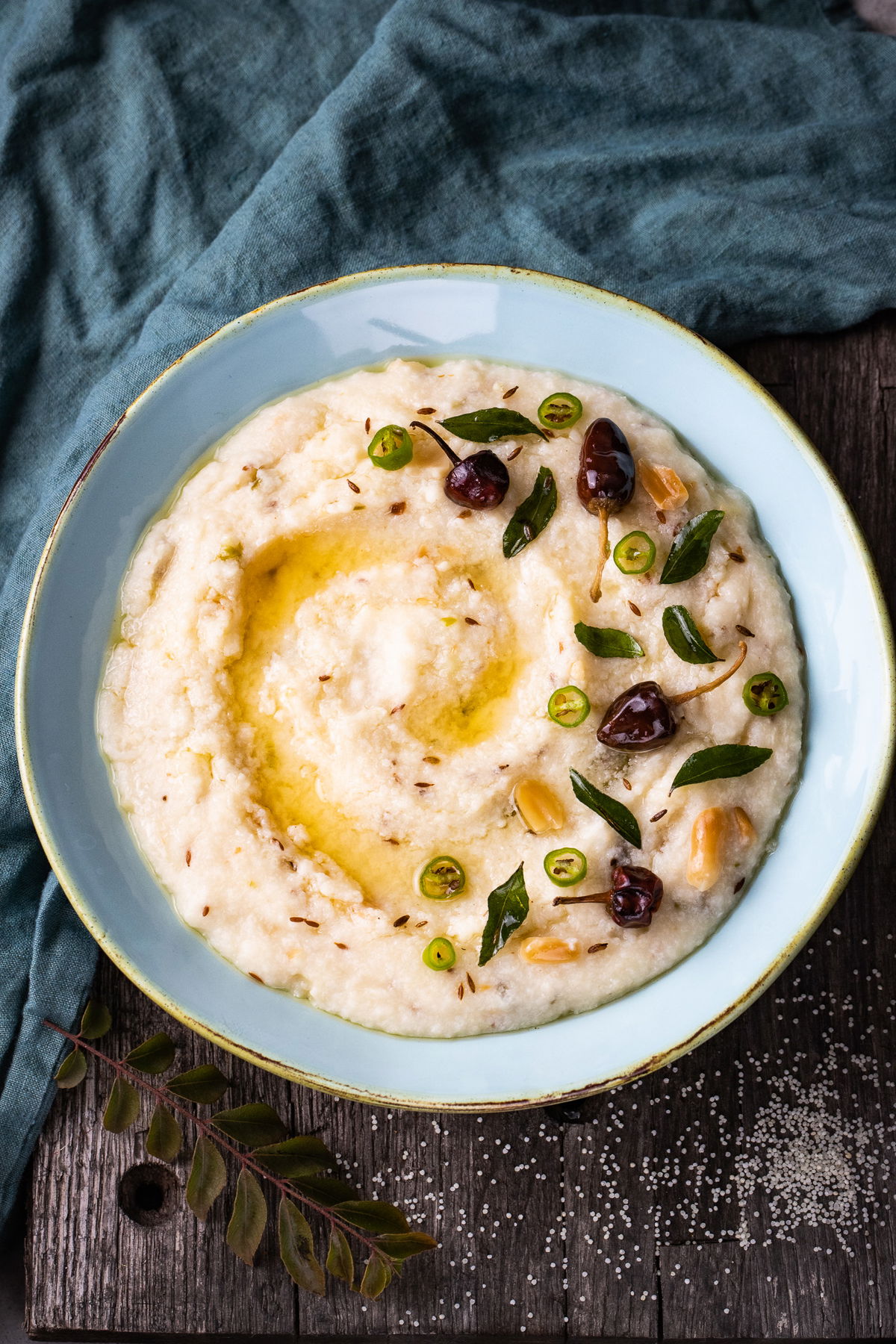
Variations
- Amount of water – use less for a more rice-like texture
- My family adds cloves and cinnamon. You can leave those out if you prefer
- You can use oil instead of ghee, but the ghee adds a nice, creamy base
- For a dairy-free version, skip the yogurt or swap with unsweetened nut milk. I would add extra lemon at the end to make up for the difference in flavor.
Refrigerating Moriyo
Moriyo keeps well in the refrigerator for up to 4 days. It will congeal a little, so when you reheat, you will need to add some water. It can be frozen for up to 2 months, but I don’t recommend it. It will develop a more mushy texture when reheated.
Recipe
Moriyo | Sama Khichdi
Moriyo, or "Moriyo Khichdi," is a mildly spiced, savory porridge slightly tangy from the yogurt. is a delicate millet with a fresh, rather than earthy, taste.
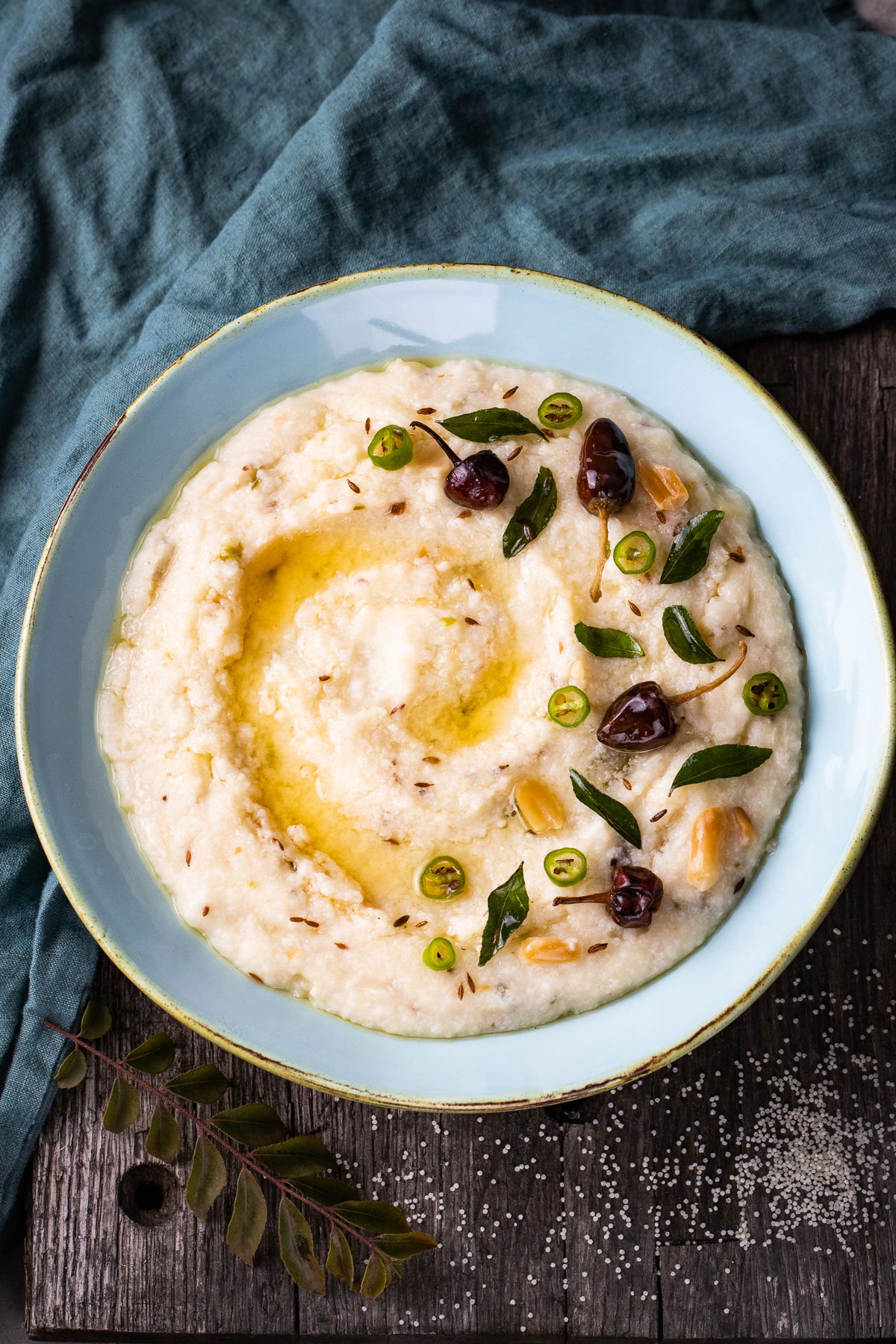
Ingredients
- 1 cup moriyo ((barnyard millet))
- 1 small potato (finely diced or grated)
- 1/4 cup raw peanuts
- 1 green chili (chopped)
- 1/2 cup yogurt
- 4 cloves
- 1 small piece cinnamon
- 1 1/2 tsp cumin
- 2 Tbsp ghee or oil
- 1 red chilies (chopped)
- 1/2 tsp salt (or to taste)
- 5 cups water
- 1 tsp ginger (grated)
- 8 curry leaves
- 1 squeeze lemon juice
Instructions
- Roughly crush peanuts and set them aside.
- Wash moriyo and set it aside.
- Whisk yogurt and water together to form chaas. Set aside.
- Make a vaghar by heating ghee. Add cumin, cloves, cinnamon, curry leaves, and red chili and stir.
- Add potatoes. Cook the potatoes, occasionally stirring, until the edges of the potatoes start to turn golden, about 3-4 minutes.
- Add peanuts and toast them until they are golden, 1-2 minutes.
- Add ginger and green chilies. Allow to cook about 30 seconds. Add a splash of water and deglaze if the ginger sticks to the pan.
- Add yogurt, water, salt, and millet. Mix well.
- Cook on high pressure for 7 minutes, followed by a natural pressure release for 15 minutes.
- Add a squeeze of lemon.
Notes:
Serve with yogurt, potato shaak, suran shaak, or amaranth kadhi.
